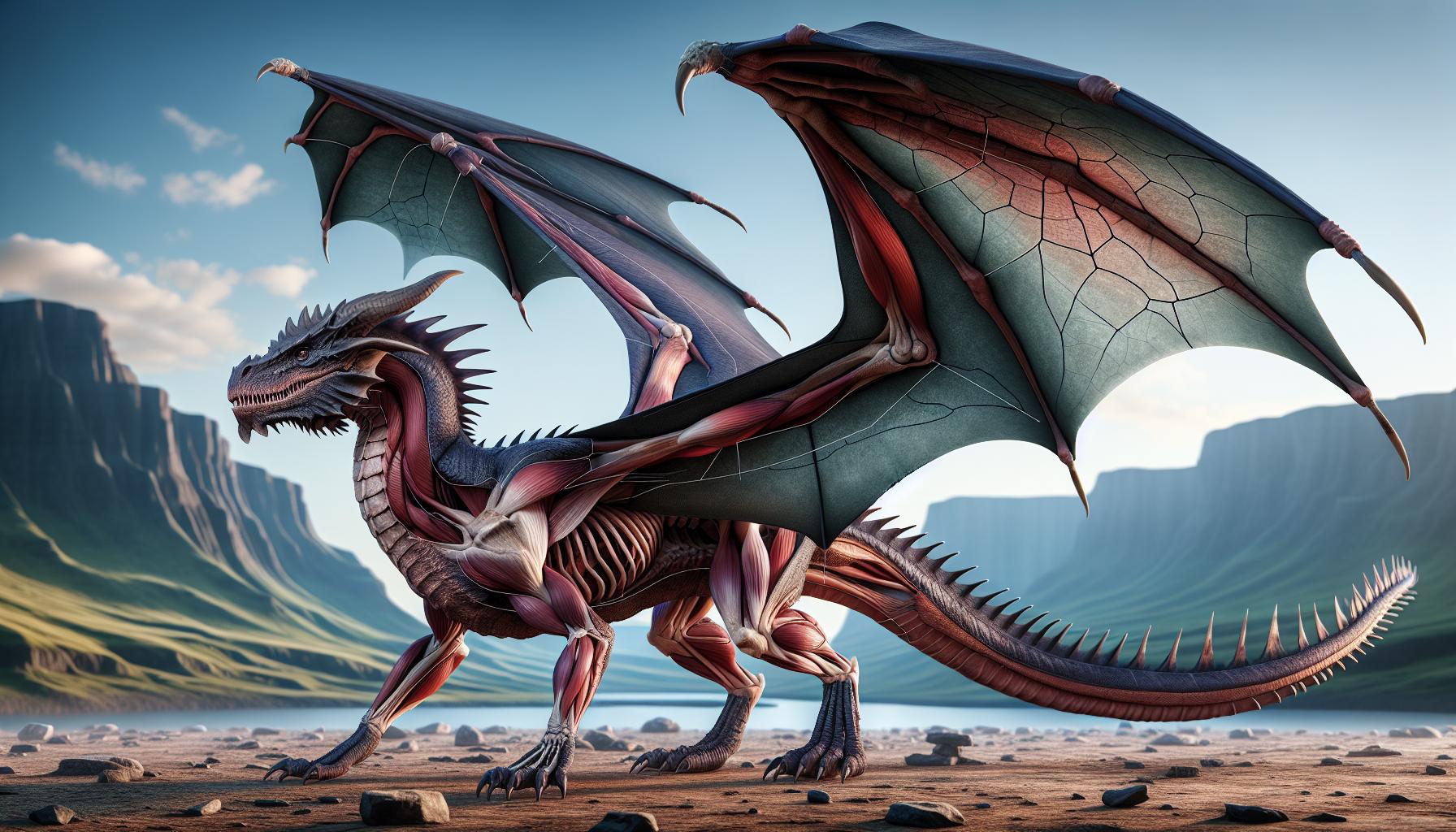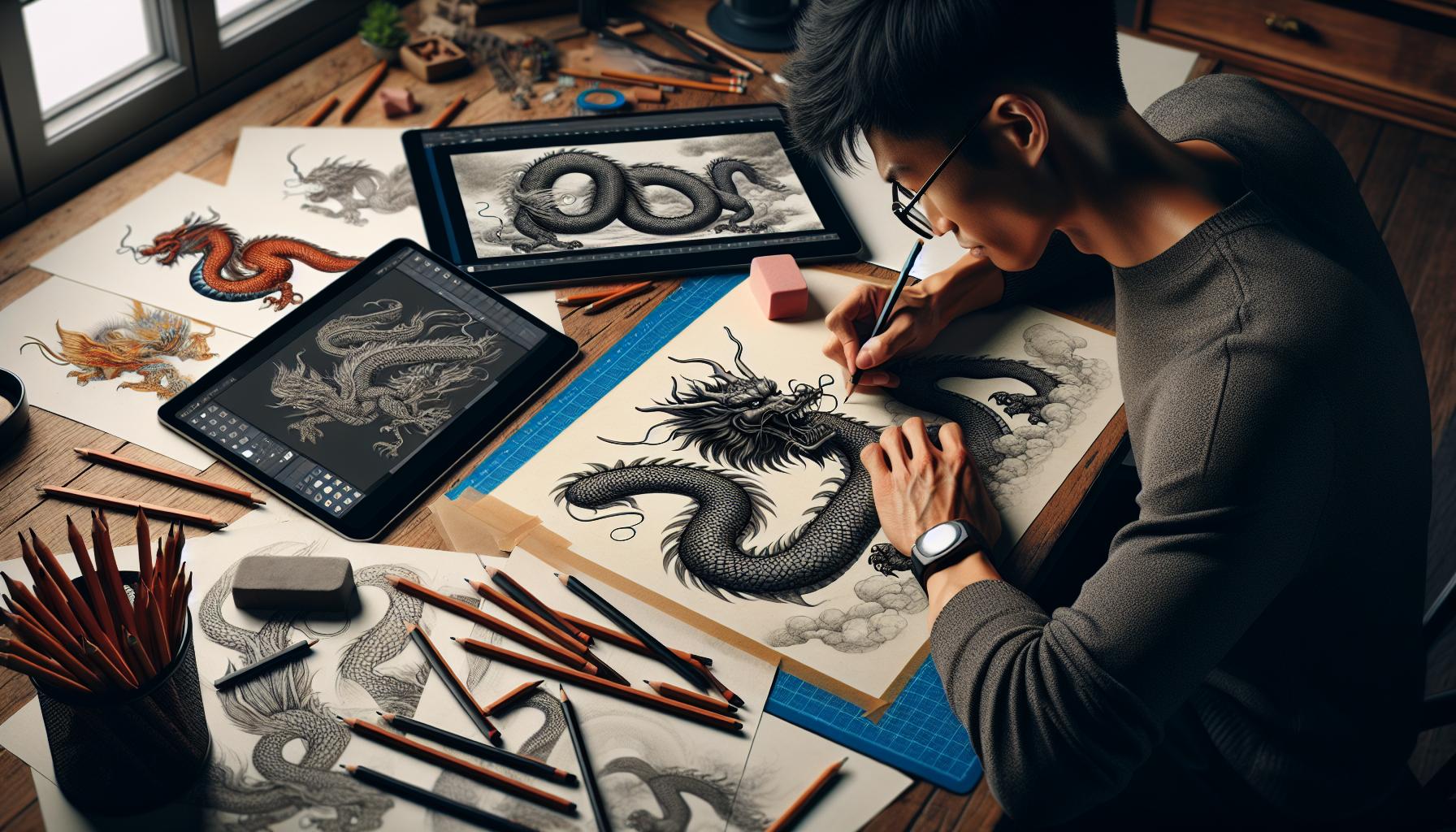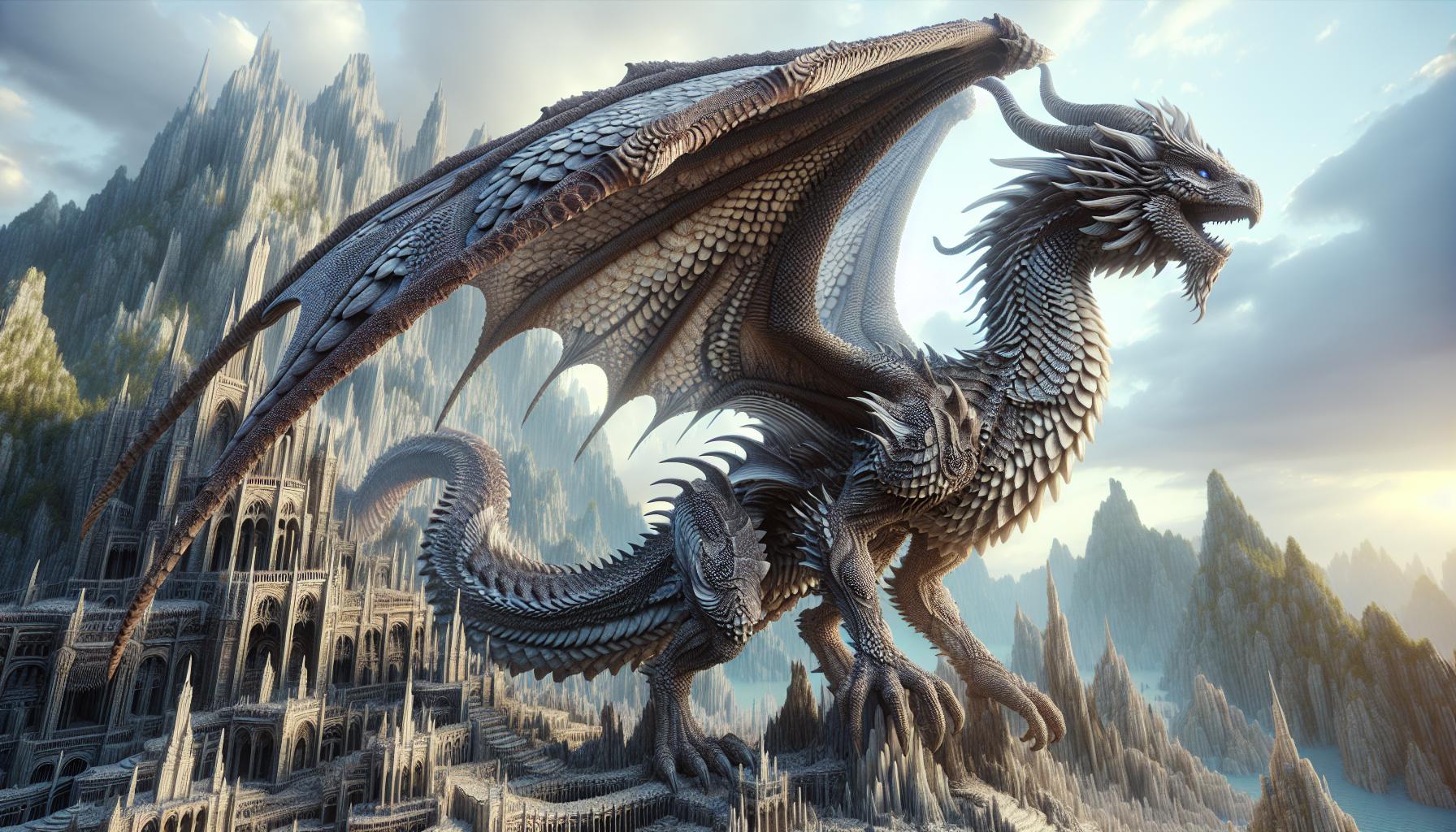Dragons have captivated our imaginations for centuries, and I’m thrilled to share my passion for drawing these mythical creatures with you. Whether you’re a seasoned artist or just starting out, creating your own dragon can be an exciting and rewarding experience.
In this guide, I’ll walk you through the process of drawing a dragon step-by-step. We’ll explore various techniques to bring your dragon to life, from sketching basic shapes to adding intricate details. By the end of this article, you’ll have the skills to create a stunning dragon that’s uniquely yours.
Key Takeaways
- Start with basic shapes and proportions, using ovals for the body and triangles for wings
- Master dragon anatomy, focusing on the head, neck, wings, and tail structure
- Create realistic textures using overlapping scale patterns and varied techniques
- Choose appropriate colors and apply shading to add depth and dimension
- Incorporate background elements to enhance the dragon’s presence and tell a story
Drawing:uwn34rdlnn0= Dragon
Drawing:uwn34rdlnn0= Dragon is a captivating blend of imagination and technique. I’ll guide you through the essential elements that bring these mythical creatures to life on paper.
Basic Shapes and Proportions
Dragons start with simple geometric forms:
- Oval for the body
- Triangles for wings and spikes
- Circles for joints and eyes
Proportions vary based on dragon type:
- Western dragons: longer necks, bulkier bodies
- Eastern dragons: serpentine bodies, smaller limbs
Scales and Textures
Scales are a dragon’s defining feature:
- Use overlapping patterns for a realistic look
- Vary scale sizes for visual interest
- Add highlights and shadows for depth
Textures enhance realism:
- Rough, bumpy skin on legs and feet
- Smooth areas on the belly and under the neck
- Leathery textures on wings
Facial Features and Expressions
A dragon’s face conveys its personality:
- Eyes: large, expressive, with slit pupils
- Nostrils: flared for a fierce look
- Horns: curved or straight, varying in number
- Teeth: sharp, protruding from closed jaws
Expressions to practice:
- Snarling: wrinkled snout, bared teeth
- Curious: tilted head, widened eyes
- Sleeping: relaxed features, closed eyes
Wings and Flight Poses
Dragon wings are complex structures:
- Bat-like membrane stretched between ‘fingers’
- Strong, muscular attachment points at the shoulders
- Varied positions: folded, half-open, fully extended
Flight poses to explore:
- Takeoff: crouched, wings spread
- Soaring: streamlined body, wings outstretched
- Landing: angled approach, wings cupped
Color and Lighting
Colors bring dragons to life:
- Traditional: reds, greens, golds
- Unique: iridescent scales, color-changing abilities
- Highlight scale edges for dimension
- Cast shadows under wings and limbs
- Reflect light in the eyes for a lifelike gleam
Understanding Dragon Anatomy
Drawing:uwn34rdlnn0= Dragon anatomy forms the foundation for creating realistic and captivating illustrations. I’ll break down the key anatomical features to help you master the art of drawing dragons.
Head and Neck
A dragon’s head is typically elongated with a powerful jaw and distinctive features. The neck is long and flexible, often adorned with spines or frills. Key elements include:
- Elongated snout with nostrils
- Large, expressive eyes with vertical pupils
- Horns or crests on the head
- Powerful jaws with sharp teeth
- Frills or spikes along the neck
- Muscular structure allowing for a wide range of motion
Wings and Body
Dragon wings are massive and intricately structured, while the body is robust and reptilian. Notable features include:
- Large, bat-like wings with a membrane stretched between fingers
- Wing joints connecting to a muscular shoulder area
- Streamlined body shape for aerodynamics
- Scales covering the entire body, varying in size and texture
- Pronounced chest and abdominal muscles
- Spinal ridge running along the back
- Muscular legs with clawed feet
- Hind legs often larger and more powerful than forelegs
- Tail length usually equal to or longer than body length
- Tail used for balance, steering in flight, and as a weapon
- Spikes or ridges along the tail
- Flexible tail structure allowing for various poses and movements
Choosing Your Medium
Selecting the right medium is crucial for bringing your dragon to life. I’ll guide you through two popular options: pencil sketching and digital drawing, each offering unique advantages for dragon illustration.
Pencil Sketching
Pencil sketching is an excellent starting point for dragon illustrations. It’s versatile, allowing for quick adjustments and easy shading. I prefer using a range of pencil grades, from 2H for light initial sketches to 6B for deep shadows. Layering techniques create texture, perfect for depicting dragon scales. Kneaded erasers are invaluable for highlighting and creating smoke effects around your dragon.
Digital Drawing
Digital drawing offers unparalleled flexibility and precision for dragon illustrations. I use software like Procreate or Photoshop with a drawing tablet for optimal control. Digital tools excel at creating intricate details, from individual scales to complex wing structures. Layers allow for easy experimentation with colors and textures. Brush customization is particularly useful for achieving unique dragon skin textures and flame effects.
Creating Texture and Scale Patterns
Texture and scale patterns are crucial elements in bringing a dragon illustration to life. I’ll guide you through effective techniques to create realistic and visually appealing textures for your dragon.
Overlapping Scale Patterns
Dragon scales are a defining feature, requiring careful attention to detail. Here’s how to create convincing scale patterns:
- Start with larger scales around the head, gradually decreasing in size towards the tail
- Use overlapping patterns to create depth and dimension
- Vary scale shapes from rounded to more angular for different body areas
- Add highlights and shadows to individual scales for a 3D effect
Textural Variations
Dragons have diverse textures across their body. Consider these techniques:
- Use crosshatching for rough, leathery skin on wings
- Apply stippling for smoother areas like the underbelly
- Create ridges and bumps along the spine with short, curved lines
- Add fine lines for wrinkles around joints and facial features
Detailing Specific Areas
Different parts of a dragon require unique textures:
- Horns and claws: Use long, sweeping lines to show growth direction
- Eyes: Add intricate iris patterns and reflective highlights
- Teeth: Draw individual serrations and vary tooth sizes
- Wing membranes: Create a delicate, veined texture with thin, branching lines
Digital Texture Techniques
When working digitally, utilize these methods for enhanced textures:
- Use custom brushes to create scale patterns efficiently
- Apply layer styles for embossed or engraved effects
- Experiment with opacity and blending modes for depth
- Incorporate texture overlays for added realism
By mastering these texture and scale pattern techniques, you’ll create dragons with rich, detailed surfaces that captivate viewers and bring your mythical creatures to life.
Adding Color and Shading
After establishing the foundational elements of your dragon illustration, it’s time to bring it to life with color and shading. I’ll guide you through effective techniques to add depth, dimension, and vibrancy to your mythical creature.
Choosing a Color Palette
Selecting the right colors for your dragon is crucial. Consider these approaches:
- Traditional: Reds, greens, blues, or golds for classic dragon appearances
- Elemental: Colors that reflect the dragon’s elemental association (fire, water, earth, air)
- Unique: Unexpected color combinations to make your dragon stand out
- Environment-based: Colors that blend with or contrast against the dragon’s habitat
Create a cohesive palette with 3-5 main colors and several complementary shades for highlights and shadows.
Applying Base Colors
Start by applying flat base colors to your dragon:
- Use the largest brush size appropriate for each area
- Work in layers to maintain flexibility
- Stay within the lines of your outline
- Apply colors evenly for a smooth base
Adding Shadows and Highlights
To create depth and form:
- Identify your light source and visualize how it interacts with the dragon’s body
- Apply shadows on areas that would receive less light:
- Underside of the body
- Creases in wings
- Beneath scales or horns
- Add highlights to areas that catch more light:
- Top of the head
- Ridges along the back
- Prominent scales or horns
Use darker shades of your base colors for shadows and lighter tints for highlights. Blend carefully to create smooth transitions.
Enhancing Texture with Color
Leverage color to emphasize textures:
- Scales: Vary the hue slightly between individual scales
- Horns and claws: Use gradients from dark at the base to light at the tips
- Eyes: Add depth with multiple layers of color and a bright highlight
- Wings: Create translucency with lighter colors in thin areas
Shading Techniques
Master these shading methods for realistic results:
- Soft shading: Gradual blending for smooth surfaces
- Hard shading: Sharp contrasts for defined edges or scales
- Cross-hatching: Intersecting lines for a textured look
- Stippling: Dots of varying density for subtle shading
Digital Color and Shading Tools
For digital artists, utilize these features:
- Layer blending modes: Multiply for shadows, Screen for highlights
- Adjustment layers: Fine-tune color balance and saturation
- Brushes with texture: Create scale patterns or rough skin textures
- Masks: Isolate areas for precise color application
By applying these color and shading techniques, your dragon illustration will transform from a basic sketch into a vibrant, three-dimensional creature that leaps off the page or screen.
Incorporating Background Elements
When drawing dragons, I find that incorporating background elements can significantly enhance the overall composition and storytelling aspect of the artwork. Here’s how I approach this crucial aspect:
Setting the Scene
I always consider the dragon’s environment to provide context and depth to the illustration. This includes:
- Natural landscapes: Mountains, forests, or caves
- Atmospheric conditions: Stormy skies, misty valleys, or clear starry nights
- Architectural elements: Castle ruins, ancient temples, or modern cityscapes
Creating Depth and Perspective
To add depth to the dragon illustration, I use these techniques:
- Foreground elements: Large rocks, trees, or structures in the immediate foreground
- Middle ground: The dragon as the main focal point
- Background: Distant landscapes or skylines with less detail and muted colors
Enhancing the Dragon’s Presence
I use background elements to accentuate the dragon’s size and power:
- Scale comparison: Placing familiar objects or creatures near the dragon
- Interaction with surroundings: Showing the dragon perched on cliffs or flying through clouds
- Environmental effects: Adding smoke, fire, or disturbed vegetation caused by the dragon
Balancing Detail
When incorporating background elements, I maintain a balance:
- Focal point: Keep the dragon as the main focus
- Detail distribution: More detail on and around the dragon, less in the background
- Color harmony: Use complementary or analogous color schemes for cohesion
Atmospheric Perspective
To create a sense of distance and atmosphere, I apply these principles:
- Color intensity: Decrease saturation for distant objects
- Contrast: Reduce contrast in far-off elements
- Detail: Simplify shapes and textures for background elements
- Edges: Soften edges of distant objects
By thoughtfully incorporating these background elements, I create dragon illustrations that are not only visually striking but also tell a compelling story within a single frame.
Combined Imagination and Artistic Skills
Drawing dragons is a thrilling journey that combines imagination with artistic skill. I’ve shared techniques to bring these mythical creatures to life, from basic shapes to intricate details. Remember, practice is key to mastering dragon illustrations. Experiment with different styles, mediums, and compositions to find your unique voice. Whether you’re sketching with pencils or creating digital masterpieces, let your creativity soar. With patience and persistence, you’ll soon be crafting awe-inspiring dragons that captivate viewers and transport them to fantastical realms.


